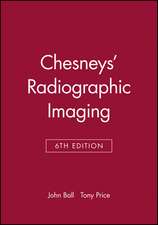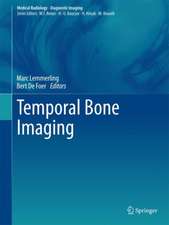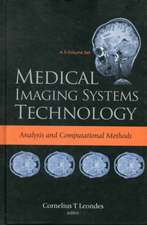Ureteral Stone Management: A Practical Approach
Editat de Sutchin R. Patel, Stephen Y. Nakadaen Limba Engleză Hardback – 25 noi 2014
| Toate formatele și edițiile | Preț | Express |
|---|---|---|
| Paperback (1) | 1021.44 lei 6-8 săpt. | |
| Springer International Publishing – 22 sep 2016 | 1021.44 lei 6-8 săpt. | |
| Hardback (1) | 719.19 lei 6-8 săpt. | |
| Springer International Publishing – 25 noi 2014 | 719.19 lei 6-8 săpt. |
Preț: 719.19 lei
Preț vechi: 757.04 lei
-5% Nou
Puncte Express: 1079
Preț estimativ în valută:
137.64€ • 143.16$ • 113.62£
137.64€ • 143.16$ • 113.62£
Carte tipărită la comandă
Livrare economică 14-28 aprilie
Preluare comenzi: 021 569.72.76
Specificații
ISBN-13: 9783319087917
ISBN-10: 3319087916
Pagini: 220
Ilustrații: X, 220 p. 38 illus., 27 illus. in color.
Dimensiuni: 155 x 235 x 17 mm
Greutate: 0.5 kg
Ediția:2015
Editura: Springer International Publishing
Colecția Springer
Locul publicării:Cham, Switzerland
ISBN-10: 3319087916
Pagini: 220
Ilustrații: X, 220 p. 38 illus., 27 illus. in color.
Dimensiuni: 155 x 235 x 17 mm
Greutate: 0.5 kg
Ediția:2015
Editura: Springer International Publishing
Colecția Springer
Locul publicării:Cham, Switzerland
Public țintă
Professional/practitionerCuprins
1. History of Ureteral Stone Management.- 2. Radiology Imaging for Ureteral Stones.- 3. Radiation Exposure to the Patient and Urologist.- 4. Selecting the Appropriate Treatment Modality for Ureteral Calculi.- 5. Observation and Medical Expulsive Therapy.- 6. Shock Wave Lithotripsy for the Treatment of Ureteral Stones.- 7. Semirigid Ureteroscopy.- 8. Flexible Ureteroscopy.- 9. Percutaneous Nephrolithotomy and Antegrade.- 10. Ureteral Stents.- 11. Adjunctive Equipment for Ureteral Stone Management.- 12. Tips and Tricks in the Treatment of Ureteral Stones.- 13. Difficult Case: The Impacted Ureteral Stone.- 14. Difficult Case: Ureteral Stricture Distal to a Stone.- 15. Complications in the Treatment of Ureteral Stones- Prevention and Management.- 16. Future Directions.
Recenzii
“This is an excellent guide to all aspects of ureteral stone management with up-to-date evidence. … it is an excellent practical guide for all levels of practitioners. … This is a well-written, thorough, and practical guide to the clinical evaluation and treatment of ureteral calculi that urology practitioners, trainees, students, and support staff could benefit from.” (Mark J. Mann, Doody's Book Reviews, May, 2015)
Textul de pe ultima copertă
Providing a complete updated roadmap to treating ureteral stones, Ureteral Stone Management: A Practical Approach presents newer topics focusing of the recent improvements in instrumentation and adjunctive equipments, managing radiation to both patient and urologist, as well as reviews of the most recent studies on urologic practices.
Ureteral Stone Management: A Practical Approach assists the reader in a logical and step wise pathway for selecting the best treatment options and how to work through complications. This evidence-based text is valuable to all those working in the field of urology.
Ureteral Stone Management: A Practical Approach assists the reader in a logical and step wise pathway for selecting the best treatment options and how to work through complications. This evidence-based text is valuable to all those working in the field of urology.
Caracteristici
Summaries will be given at the end of each chapter to help the reader assimilate the most important points in each chapter This book will contain algorithms for the management of ureteral stones and how to deal with various complications which will assist the reader in selecting the best treatment option This book will show the reader the limitations and accuracy of new imaging modalities through radiology imaging and radiation exposure to the patient and urologist









